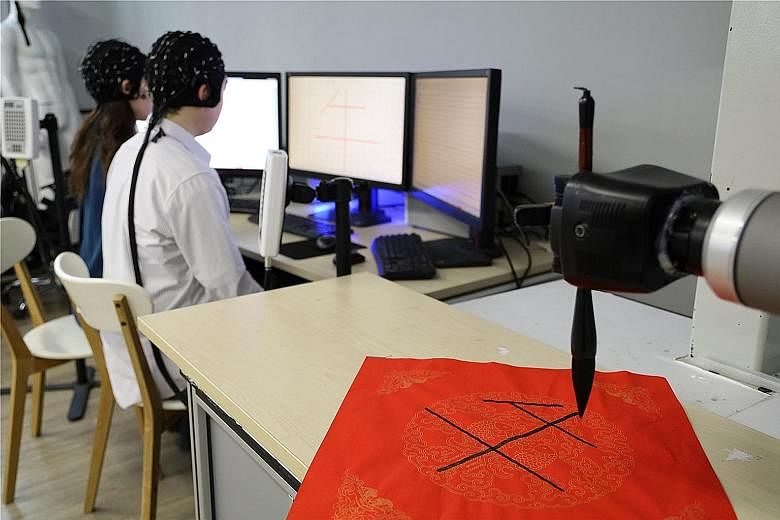TIANJIN • Hanging the Chinese character "fu" ("happiness" in English) on doors and walls is the most common and an important custom of Chinese New Year, which falls on Friday this year.
The character, which expresses people's delight in the festival and their wishes for the coming year, is traditionally handwritten by calligraphers. But now, a robot arm has taken over the job at the Academy of Medical Engineering and Translational Medicine under Tianjin University.
The year 2021 is the Year of the Ox, according to the Chinese zodiac. The Chinese characters "fu" and "niu" ("ox" in English) written on red paper are pasted on the walls of the academy.
"These characters are 'written' by a robot arm controlled by our researchers' minds," Associate Professor Xu Minpeng from the academy said. "It is supported by brain-computer interaction (BCI) technology."
BCI is a system that allows a person to control a computer or other electronic device using his or her brainwaves, without requiring any movement or verbal instruction.
"Our thoughts are normally expressed through the peripheral nervous system and muscle tissues, but the BCI system can bypass the pattern and build a direct link between the brain and the computer," Prof Xu said.
In the lab, two researchers wear caps studded with sensitive electrodes, and their eyes focus on a computer screen to "mind-write" the strokes of a Chinese character.
After the writing system reads and interprets the electroencephalogram signals, the robot writes the Chinese character on red paper.
"Each area of the computer screen represents an instruction.
"When the operator selects an instruction and gazes at the corresponding area, the visual stimulus triggers the corresponding brain waves. Then, the system can decode the operator's intent and control the robot to write the character," Prof Xu explained.
The mind-controlled writing system allows two people to work on a character simultaneously by dividing it into two parts. In 2019, Prof Xu's team developed a system that was operated by just one person.
Ms Luo Ruixin, a student on the team, said BCI is now more integrated into her daily life. She plans to send the special couplets to her parents to show them how meaningful her research work is.
Prof Xu said: "The combination of technology and traditional Chinese culture can spawn many new customs."
His team hopes to share blessings through the new technology, and add more scientific and technological elements to the celebration of Chinese New Year.
In the future, BCI can be widely used in the fields of medical treatment, education, home life and gaming, according to Prof Xu.
"Its application will gradually enter the homes of ordinary people," he said.
XINHUA

